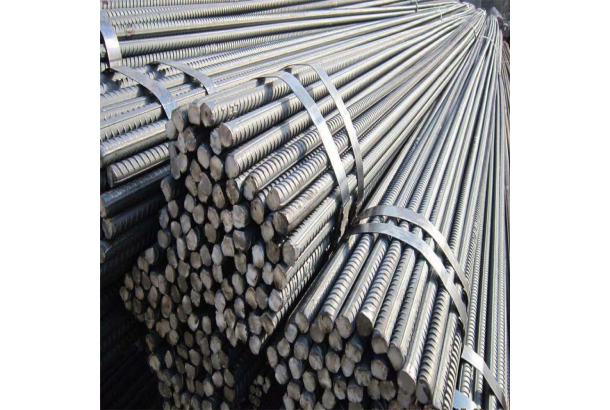Steel procurement in the digital era: Transformation and future trends
by Tushar Kamat, Chief Business Officer at Bizongo
The urgency for digital transformation has never been more evident in the steel industry. The industry is navigating a competitive global landscape while meeting the demands of environmentally conscious consumers. In response, businesses are increasingly turning to digital technologies for raw material procurement in order to gain a competitive edge and drive sustainable practices. According to ABI Research, steel manufacturers' investment in digital transformation is expected to grow at a CAGR of 10.9% between 2022 and 2031, reaching US$5.9 billion. Similarly, Gartner's 2023 CIO Agenda Insights for the Manufacturing Industry reveals that 80% of CEOs in the manufacturing sector are ramping up digital technology investments to counter current economic pressures.
Digital procurement of raw materials ensures that businesses can source and acquire the materials while also minimizing the risk of production getting stalled, financial losses, and disruptions caused by supply chain shortages. This makes it essential for procurement teams to implement effective processes to find the ideal supplier. A wrong choice can lead to production delays, quality issues, and budget overruns.
Pain points of traditional steel procurement
Procuring raw materials traditionally is a complex process involving supplier selection, requirements assessment, and regulatory compliance. Finding the right suppliers for specific needs within a saturated market can be challenging, and the evaluation process can prove time-consuming. Moreover, supply uncertainties due to production disruptions and logistical bottlenecks further complicate the supply chain. Regulatory compliance is another essential aspect of supplier selection, as suppliers often operate within diverse regulatory frameworks and follow a variety of industry standards.
Addressing these issues requires digital tools, consolidated platforms, and improved supply chain financing​. By streamlining their procurement processes, businesses can ensure that they are aligned with the best possible options in the market.
Digital transformation in action
Digital tools and technologies are reshaping processes, addressing the inefficiencies of traditional methods, and providing numerous benefits:
- Consolidated raw material procurement platforms
Consolidated raw material procurement platforms are a cost-effective sourcing strategy. Through these, businesses can negotiate better and make bulk purchases, leading to reduced operational expenses. Further, with their pan-India presence, these platforms allow access to the best regional rates and optimize costs through a diverse supplier network. Building a strong vendor ecosystem improves procurement reliability and flexibility, giving businesses more favorable terms and contributing to an economical and stable supply chain. Furthermore, with customer service as the prime key to success, these platforms ensure that all queries and concerns are addressed promptly and offer quick Turnaround Time (TAT). By offering real-time visibility on the phone through mobile apps, consolidated raw material procurement platforms help enhance transparency and streamline communication, enabling better decision-making.
- Artificial intelligence (AI)
Advanced procurement platforms that are specifically designed to connect businesses with the right suppliers solve complexities by using smart computer algorithms. This technology significantly improves procurement processes by streamlining vendor discovery, product catalog exploration, order placement, and tracking. It personalizes the user experience by identifying industry needs and offering a streamlined approach to supplier discovery. Further, AI-driven analysis of historical data also helps provide proactive prompts to buyers, indicating potential price fluctuations.
- Real-time market insights & cost optimization
Businesses can leverage AI-driven platforms to gain real-time market insights specific to their products and locations. Digitally-driven raw material procurement processes provide transparency in pricing, enabling businesses to compare quotes from various suppliers and make informed decisions to optimize costs. Additionally, the automation of transactions simplifies the process – from order placement to invoicing, significantly reducing paperwork and administrative overhead. By eliminating manual errors and streamlining workflows, the teams can focus more on strategic initiatives than administrative tasks.
- Supply chain financing
With small businesses often facing challenges in accessing traditional bank loans for working capital, supply chain finance has emerged as a reliable alternative. A win-win for both buyers and suppliers, SCF offers a better way for working capital management and strengthens the relationships between the two parties. For buyers, the benefits of SCF include extended payment terms, improved working capital management and forecasting, and enhanced supplier relationships. On the other hand, for suppliers, the advantages include cash flow management, accelerated payments, and lower interest rates.
What does the future hold?
The digital era presents a transformative opportunity for steel suppliers to enhance efficiency, reduce costs, and mitigate risks. Continuous digital transformation is essential for organizations to maintain competitiveness in a rapidly evolving market environment.
A consolidated raw material procurement platform helps businesses manage supply chain disruptions more effectively. With access to multiple suppliers, companies can diversify their sourcing options, reducing dependency on any single supplier. This allows for quicker prevention of unforeseen events, ensuring a consistent supply of materials, and minimizing the impact of potential disruptions, thus maintaining production continuity and stability.
Modern digital procurement platforms today are consistently working towards making their technology user-friendly and easy to adopt, particularly through mobile devices. The success of this initiative heavily relies on the widespread use of mobile devices and affordable data across the country, even in tier two and tier three towns, facilitating the adoption of technology, creating a seamless experience for users.
In this dynamic digital landscape, the ability to adapt and innovate will be key to unlocking new opportunities and achieving long-term success in the steel industry.
















